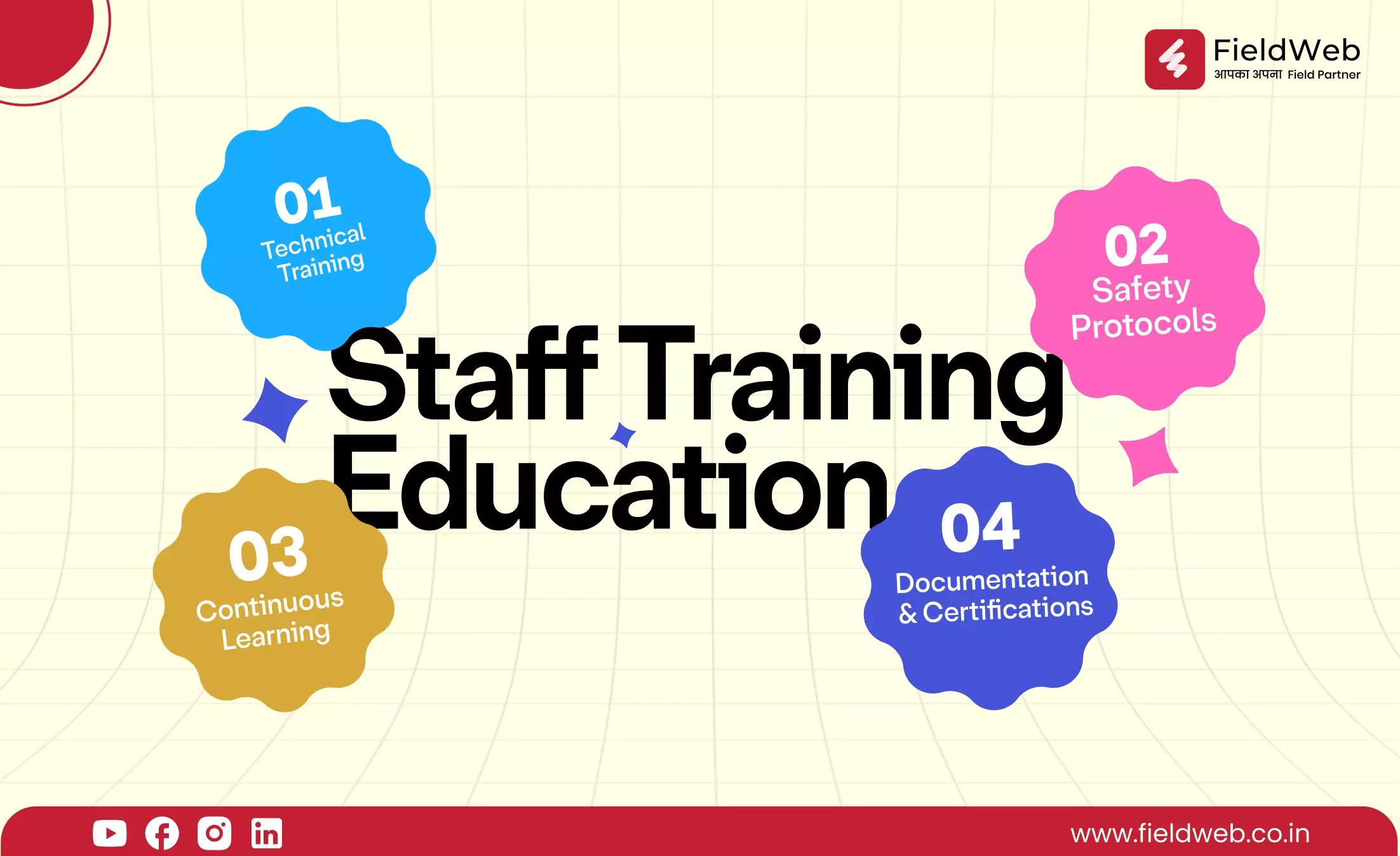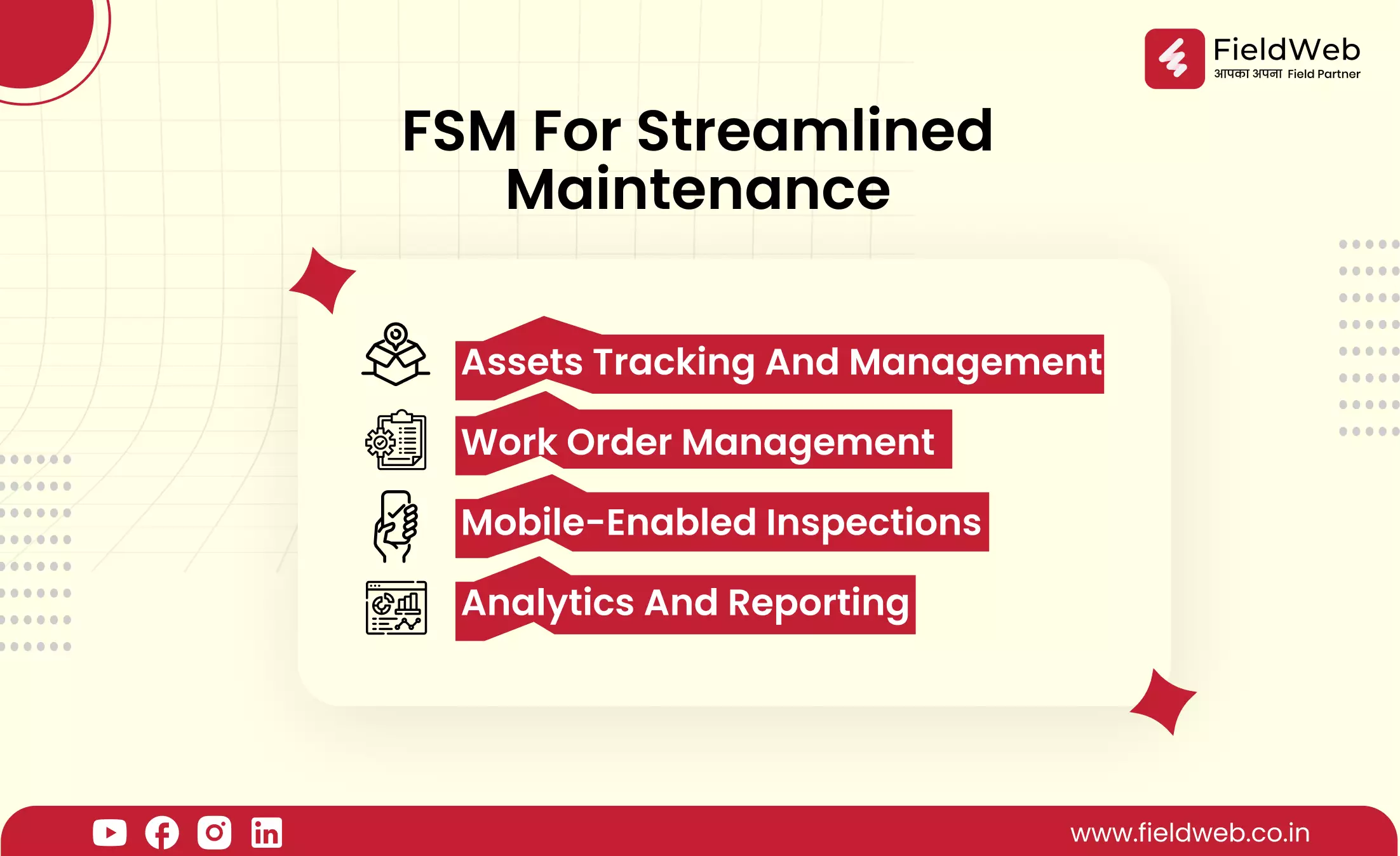
Elevating Lift Maintenance: Best Practices for Lift Businesses
Introduction:
Proper lift maintenance is crucial for ensuring safe and efficient
operations in the lift industry. In countries, where elevators play a vital role in various
sectors such as commercial buildings, residential complexes, and industrial facilities, it
is essential for businesses to implement effective maintenance strategies to meet the high
demands of lift usage. This blog aims to provide valuable insights into lift maintenance
best practices, offering tips and guidelines specifically tailored to, lift and elevator
businesses.
Lift businesses face unique challenges due to factors such as extreme
weather conditions, high usage rates, and stringent safety regulations. By adopting the
right maintenance strategies, businesses can optimize lift performance, enhance user safety,
and extend the lifespan of their equipment.
Throughout this blog, we will explore various aspects of lift
maintenance, including effective strategies, practical tips, and essential guidelines.
Importance of Regular Inspections
Regular inspections are of paramount importance in lift maintenance as
they ensure the safety, functionality, and compliance of lift systems. Inspections play a
crucial role in identifying potential safety hazards and ensuring the safe operation of
lifts. By conducting regular inspections, lift businesses can detect issues such as worn-out
components, loose connections, faulty safety devices, or improper functioning of emergency
systems.
Key Elements of Effective Inspections
- Inspection Frequency: Determining the appropriate frequency of inspections is
crucial for maintaining lift safety and performance. The inspection frequency should be
based on factors such as lift usage, operational demands, and regulatory requirements.
Lift businesses should consider the volume of daily usage, the type of building or
facility where the lifts are installed, and any specific regulations or standards
applicable to their industry.
- Inspection Checklist: Creating a comprehensive inspection checklist is essential
to ensure that all essential components and systems are thoroughly inspected. The
checklist should cover a wide range of items, including electrical components,
mechanical systems, safety features, and emergency procedures.
- Data Collection and Reporting:Digital tools like FieldWeb-FSM can significantly
streamline the data collection and reporting process during inspections. Technicians can
use the FieldWeb-FSM mobile app to capture inspection data, record observations, and
take photos directly on-site. This eliminates the need for manual paperwork and ensures
accurate and consistent data collection.
- Proactive Issue Resolution: During inspections, minor issues may be identified
that, if left unresolved, could lead to major breakdowns or safety hazards. Lift
businesses should prioritize the prompt resolution of these issues to prevent more
significant problems from arising. FieldWeb-FSM can facilitate proactive issue
resolution by providing a platform for technicians to report and document identified
issues.
The Role of Preventive Maintenance
Preventive maintenance plays a vital role in ensuring the reliability,
safety, and longevity of lift systems. By implementing a proactive approach to maintenance,
lift businesses can minimize unexpected breakdowns, reduce downtime, and optimize the
performance of their lifts.
Developing a Preventive Maintenance Plan
- Task Scheduling: Effective task scheduling is crucial for lift maintenance to
ensure that routine maintenance tasks are performed in a timely manner. Lift businesses
should create a schedule for tasks such as lubrication, adjustment, and component
replacement. By adhering to a predefined schedule, businesses can prevent potential
issues, extend the lifespan of lift equipment, and minimize unexpected downtime.
- Condition Monitoring: Condition monitoring involves the use of advanced
technologies and sensors to monitor the performance of lifts continuously. These
technologies can detect early signs of potential issues, such as abnormal vibrations,
temperature variations, or deviations in operating parameters. By monitoring lift
performance, businesses can identify problems at an early stage and take proactive
measures to address them, minimizing the risk of breakdowns and costly repairs.
- Predictive Maintenance: Predictive maintenance goes beyond traditional preventive
maintenance approaches by leveraging data collected through condition monitoring. By
analyzing the collected data, businesses can identify patterns, trends, and anomalies
that may indicate potential maintenance needs. This enables lift businesses to predict
when maintenance or repairs will be required and schedule proactive maintenance
activities accordingly.
- Maintenance Documentation: Accurate and comprehensive maintenance documentation
is crucial for lift businesses. FieldWeb-FSM can serve as a powerful tool for recording
maintenance activities, tracking maintenance history, and automating maintenance
reminders. The system allows technicians to log detailed information about each
maintenance task, including the date, time, performed activities, and any parts used.
Adhering to Safety Standards and Regulations
Adhering to safety standards and regulations is of utmost importance in
the lift industry to ensure the safety and well-being of passengers and maintain compliance
with legal requirements. Lift businesses in must prioritize the adherence to established
safety standards and regulations set by local authorities and industry organizations. By
complying with these standards, businesses demonstrate their commitment to maintaining safe
lift operations and safeguarding the welfare of users.
Staff Training and Education
- Technical Training: To ensure the highest level of lift maintenance, it is
essential to provide comprehensive training programs to technicians. These training
programs should focus on equipping technicians with up-to-date knowledge of lift
technologies and maintenance procedures. FieldWeb-FSM can play a vital role in
supporting technical training initiatives by providing a centralized platform for
training materials, resources, and documentation.
- Safety Protocol: Safety is of paramount importance in lift maintenance. It is
crucial to educate maintenance staff about safety protocols, emergency procedures, and
risk prevention measures. Technicians should be well-versed in safety standards and
regulations specific to the lift industry.
- Continuous Learning: The lift industry is continually evolving, with new
technologies and best practices emerging. Encouraging technicians to engage in
continuous learning is vital for staying updated with industry advancements and
improving their skills.
- Documentation and Certifications: Effective documentation and certifications are
essential in lift maintenance to ensure compliance, track progress, and facilitate
knowledge sharing within the organization. Standard Operating Procedures (SOPs) should
be developed to outline maintenance procedures, safety protocols, and best practices.
Condition Monitoring and Predictive Maintenance
Condition monitoring and predictive maintenance are essential components
of a proactive lift maintenance strategy. In countries, where lift systems experience high
usage and are subject to various environmental factors, implementing condition monitoring
and predictive maintenance techniques can significantly enhance lift performance and
minimize unexpected breakdowns.
Condition monitoring involves the use of advanced technologies and
sensors to continuously monitor the operating parameters of lifts. By collecting real-time
data on factors such as vibration, temperature, and energy consumption, technicians can gain
valuable insights into the condition of lift components and detect early signs of potential
issues. This proactive approach allows for timely intervention before minor problems
escalate into major failures.
Integration of FieldWeb-FSM for Streamlined Maintenance
- Asset Tracking and Management: Asset tracking and management are critical
components of any lift maintenance strategy. FieldWeb-FSM provides robust asset tracking
and management capabilities, allowing businesses to keep track of all their assets,
manage inventory, and ensure proper maintenance of spare parts.
- Work Order Management: FieldWeb-FSM provides a comprehensive work order
management system that streamlines work order creation, assignment, and tracking. The
system allows businesses to create work orders quickly and easily, assign them to
technicians based on their skill sets and availability, and track the progress of each
work order in real-time. This helps businesses ensure that all work orders are completed
on time and to the required standards.
- Mobile-enabled Inspections: FieldWeb-FSM's mobile app allows technicians to
conduct inspections, capture data, and generate reports on the go. This makes it easy
for businesses to stay on top of inspections and maintenance tasks, even when
technicians are working remotely. Technicians can use the app to access work orders,
view inspection checklists, and record data such as asset information, maintenance
records, and photos. This helps businesses maintain accurate and up-to-date records of
their assets and maintenance activities.
Promoting Safety Awareness and Reporting
Promoting safety awareness and fostering a culture of reporting are
vital aspects of lift and elevator maintenance. By prioritizing safety and creating an
environment where employees feel comfortable reporting potential hazards or incidents, lift
businesses can enhance safety standards and mitigate risks effectively.
One of the key elements in promoting safety awareness is conducting
regular safety meetings. These meetings serve as a platform for discussing safety-related
topics, sharing best practices, and addressing any concerns raised by the maintenance staff.
It is an opportunity to reinforce safety protocols, provide updates on industry regulations,
and discuss lessons learned from past incidents. FieldWeb-FSM can support these safety
meetings by providing a centralized platform for documenting meeting minutes, sharing safety
resources, and tracking action items to ensure timely follow-up.
Continuous Improvement and Performance Evaluation
- Safety Meetings and Training: Conducting regular safety meetings is a critical
component of effective lift maintenance strategies. These meetings serve as a platform
for discussing safety-related topics, sharing best practices, and addressing concerns.
By prioritizing safety communication and awareness, lift businesses can create a culture
of safety that permeates throughout the organization.
- Incident Reporting and Analysis: Incident reporting and analysis are critical for
identifying safety issues and implementing corrective measures. FieldWeb-FSM provides
incident reporting features that enable lift businesses to track safety incidents and
investigate their root causes. By analyzing incident data, businesses can identify
trends and areas for improvement, and take corrective action to prevent similar
incidents.
- Performance Evaluations: Assessing maintenance staff's performance is a key
component of effective lift maintenance strategies. Performance evaluations should be
based on key performance indicators (KPIs) such as maintenance completion rates,
response times, and customer satisfaction. Safety records should also be taken into
account when evaluating performance.
- Feedback and Recognition: Encouraging feedback from technicians is essential for
identifying safety issues and improving lift maintenance strategies. Technicians are
often on the front lines of lift maintenance and may have valuable insights into safety
hazards and potential risks.
Conclusion
In conclusion, implementing effective lift maintenance strategies is
crucial for lift and elevator businesses to ensure safe and reliable elevator operations. By
conducting regular inspections, prioritizing preventive maintenance, ensuring compliance
with safety standards, providing proper training, implementing condition monitoring,
leveraging technology such as FieldWeb-FSM, and fostering a culture of safety and
accountability, lift businesses can optimize their maintenance efforts. FieldWeb-FSM acts as
a comprehensive field service management solution, enabling businesses to streamline their
lift maintenance processes, enhance data collection, and improve overall efficiency.
By combining industry best practices with the capabilities of
FieldWeb-FSM, lift businesses can elevate their maintenance operations, reduce downtime,
enhance safety, and deliver a superior lift experience to their customers.





